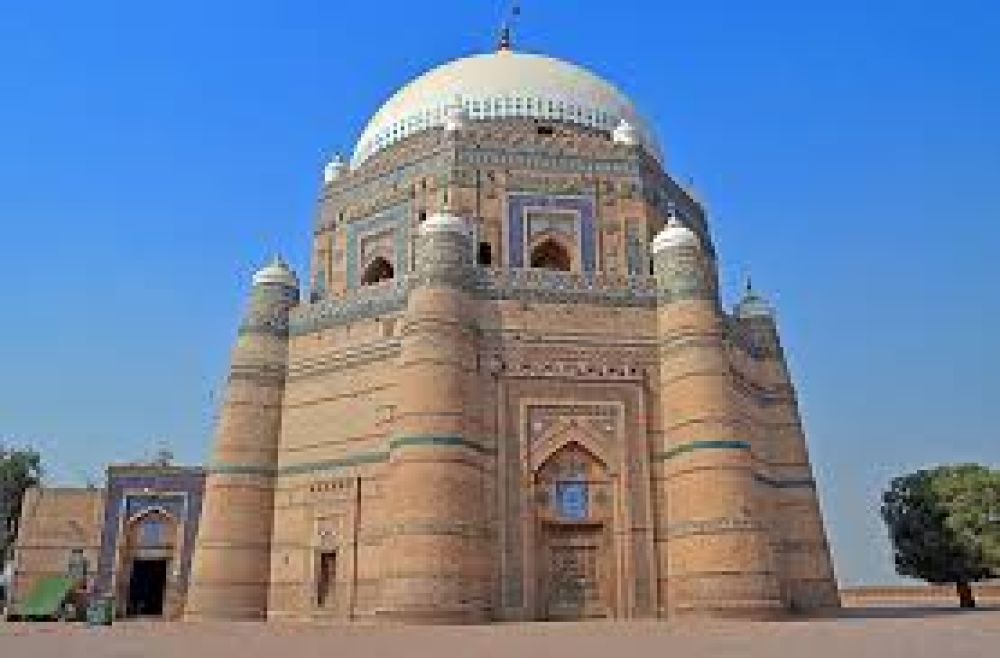

The city of Multan, situated in the Punjab province of Pakistan, is often referred to as the 'City of Saints' due to its rich spiritual history and numerous Sufi shrines. Among these, the Shrine of Shah Rukne Alam stands out as one of the most revered and significant landmarks in the region. Tourism at this shrine has a history that is interwoven with the cultural and spiritual fabric of the area.
The Shrine of Shah Rukne Alam was constructed between 1320 and 1324 under the supervision of Ghiyath al-Din Tughluq, the Sultan of Delhi. It was built to serve as the mausoleum for the revered Sufi saint Sheikh Rukn-ud-Din Abul Fateh, commonly known as Shah Rukne Alam. The saint himself was the grandson of another famous Sufi figure, Baha-ud-Din Zakariya, which contributed to the shrine's prestige and the city's spiritual significance.
For centuries, the Shrine of Shah Rukne Alam has attracted pilgrims from all over the subcontinent. It gained prominence during the Mughal empire when emperors like Humayun, Akbar, and Shah Jahan visited Multan. The shrine continued to be an important stop for tourists, historians, and spiritual seekers during the Sikh and British periods. Today, it not only draws in those seeking spiritual blessings but also tourists interested in the history and architecture of the region.
The stunning architecture of the shrine is a major draw for visitors. Its dome is considered one of the largest in the world, and the remarkable blue and turquoise Kashi tile work contributes to its visual grandeur. The Shrine of Shah Rukne Alam is also a classic example of Tughluq architecture, with strong and bold structures complemented by intricate surface decoration.
In recent years, cultural tourism has become increasingly popular in Multan, with the shrine playing a pivotal role. Social media has enabled people to discover the historical site's beauty, leading to a modest increase in domestic and international visitors. Moreover, the government's efforts to promote the region's cultural heritage have boosted interest.
Development projects around Multan have focused on conservation efforts and improving tourist facilities, ensuring that visitors can appreciate the site while preserving its integrity. Additionally, events like the Urs, a festival commemorating the saint's death anniversary, continues to attract thousands of devotees annually.
Like many historical sites around the world, the Shrine of Shah Rukne Alam faced challenges due to the COVID-19 pandemic, with a significant decrease in visitors during lockdown periods. However, as restrictions have lifted, there has been a slow but steady revival of tourism, with safety protocols in place to protect both visitors and residents.
Visitors to the shrine can bask in its peaceful ambiance and admire the intricacies of its design. While there, tourists can also explore other attractions in Multan, such as the Multan Fort, the Mausoleum of Bahauddin Zakariya, and the city's famed bazaars, which are known for their exquisite handicrafts and delicious local cuisine.
In conclusion, the Shrine of Shah Rukne Alam remains a cornerstone of tourism in Multan, with a history that encapsulates the rich cultural and spiritual legacy of the region.